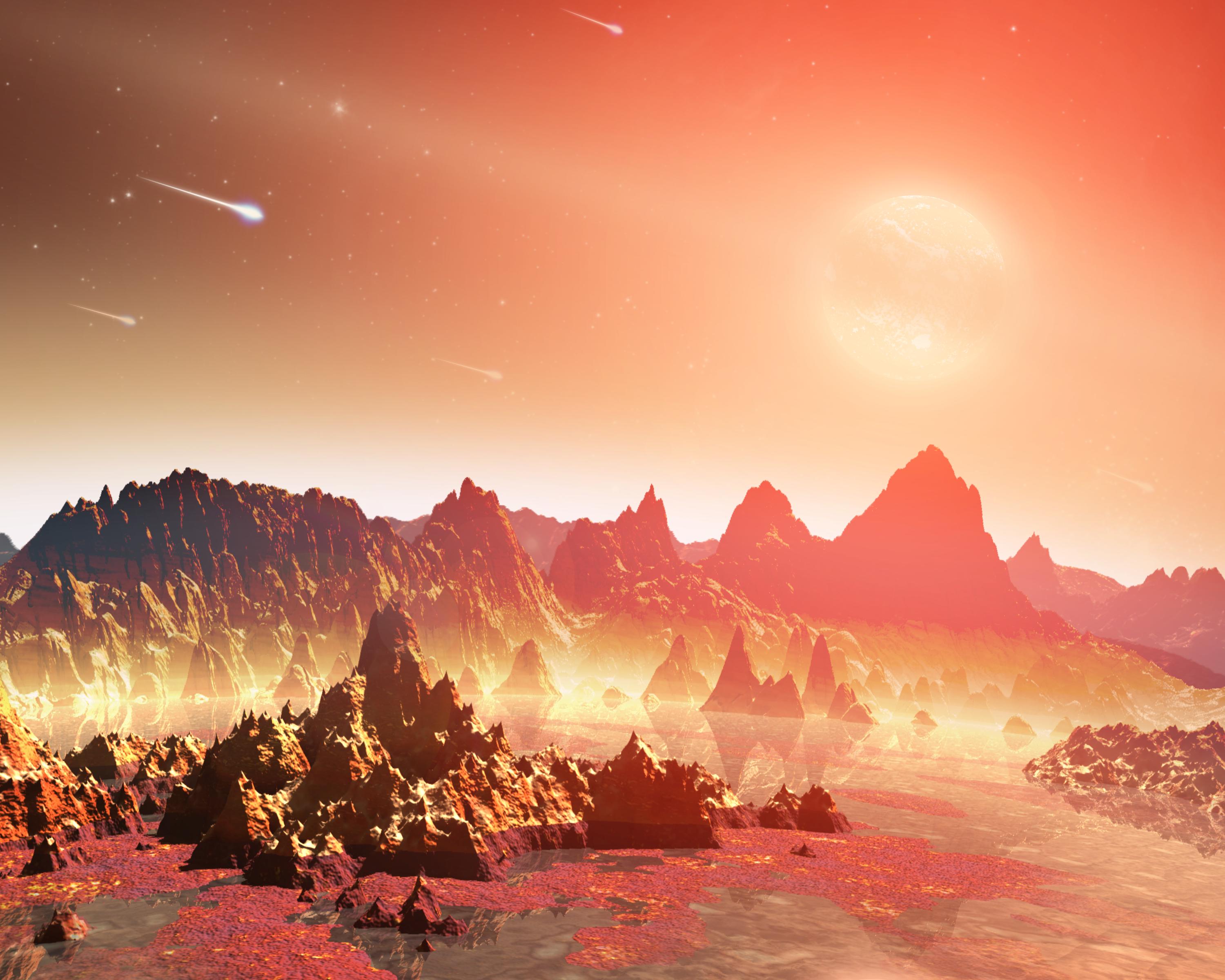
|
Chemical Soups Around Cool Stars (Artist Concept)
- Click the image above for a larger view
- Full-Res JPEG (3000 x 2400) (519.4 kB)
- Full-Res TIFF (3000 x 2400) (21.6 MB)
Caption:
This artist's conception shows a young, hypothetical planet around a cool star. A soupy mix of potentially life-forming chemicals can be seen pooling around the base of the jagged rocks. Observations from NASA's Spitzer Space Telescope hint that planets around cool stars—the so-called M-dwarfs and brown dwarfs that are widespread throughout our galaxy—might possess a different mix of life-forming, or prebiotic, chemicals than our young Earth.
Life on our planet is thought to have arisen out of a pond-scum-like mix of chemicals. Some of these chemicals are thought to have come from a planet-forming disk of gas and dust that swirled around our young sun. Meteorites carrying the chemicals might have crash-landed on Earth.
Astronomers don't know if these same life-generating processes are taking place around stars that are cooler than our sun, but the Spitzer observations show their disk chemistry is different. Spitzer detected a prebiotic molecule, called hydrogen cyanide, in the disks around yellow stars like our sun, but found none around cooler, less massive, reddish stars. Hydrogen cyanide is a carbon-containing, or organic compound. Five hydrogen cyanide molecules can join up to make adenine—a chemical element of the DNA molecule found in all living organisms on Earth.
Cataloging Keywords:
| Name | Value | Additional Values |
|---|---|---|
| Target | ||
| System | ||
| Target Type | Exoplanet | |
| Mission | Spitzer Space Telescope | |
| Instrument Host | Spitzer Space Telescope | |
| Host Type | Space Telescope | |
| Instrument | ||
| Detector | ||
| Extra Keywords | Artwork, Color, Disk, Dust, Infrared | |
| Acquisition Date | ||
| Release Date | 2009-04-07 | |
| Date in Caption | ||
| Image Credit | NASA/JPL-Caltech | |
| Source | photojournal.jpl.nasa.gov/catalog/PIA11980 | |
| Identifier | PIA11980 | |
